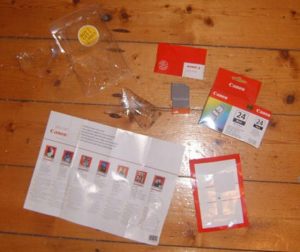Products seem to be delivered to the consumer in ever more packaging these days. And the consumer is forced to pay for it in the end — not just environmentally but financially as well. Tax dollars go to pay to reuse or recycle excess packaging — or to truck it to a landfill site.
In European Union countries an appropriate law came into force which makes overpackaging illegal. As part of the Europe-wide rules on packaging, packaging must now be manufactured so that “its volume and weight is limited to the minimum adequate amount to maintain the necessary level of safety, hygiene and acceptance of the packed product for the consumer.”
In Germany, for example, you can see a distinct difference in the way products are packaged. The same products you can buy in the United States are available there with less packaging, less-toxic or non-toxic components and more recyclability because manufacturers must comply with federal laws that require them to design their products for the environment, not the dump.
Historically, the United States hasn’t been big on that kind of federal legislation. This is the land where the consumer is king or queen, so it’s up to us to make this kind of change happen.
One-third of American garbage is packaging materials, according to the Environmental Protection Agency in Washington.
And there’s not necessarily a good reason for it. Many companies are simply following convention and haven’t looked into better ways to package their products.
Not only is minimal packaging better for the environment, it also costs less to produce. Companies can save a lot of money when they reduce packaging.
Printer cartridges add to the problem of overpackaging, too. This picture speaks for itself:

The small grey object you can see in the middle of the picture is an ink cartridge, most of the rest of the stuff you see is waste. The cartridge comes in a small sealed plastic pouch, which is in a box with various papers. This is then packaged in an entirely unnecessary plastic container which is virtually impossible to open.
This is one thing.
Another thing is that when you buy ink and toner cartridges online, seller often add styrofoam packing peanuts or other filler to prevent possible damage of cartridge in parcel. Taking into account that a toner cartridge box usually already contains protective filler (for instance, HP toner cartridge is surrounded by an air-filled safety “jacket” in box), it even increases overpackaging and, eventually, lanfill.
More important is that these styrofoam packing peanuts cost you additional money.
However there are some advices to reduce packaging waste, be more ecologically consious and also save some movey:
- Avoid snacks and other foods wrapped in individual serving sizes. Instead, buy bigger bags of the snacks and put smaller servings in paper bags.
- Buy personal hygiene and home-cleaning products in bulk when possible.
- Buy cereal in bags instead of boxes, which usually contain bags inside.
- Buy loose fruits and vegetables instead of those packaged in Styrofoam trays and shrink-wrap. Fix your own fresh-fruit cups instead of buying cut-up fruit in plastic containers.
- Avoid buying products packaged in blister packs (molded plastic attached to cardboard.) Although sometimes blister packs serve a hygienic purpose (making sure cosmetics or medicines aren’t tampered with, for instance), they are often unnecessary.
- Use fewer individual serving-size bottles of water and juices.
- Buy ink and toner cartridge at Toner Cartridge Depot.
